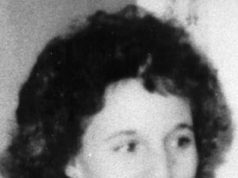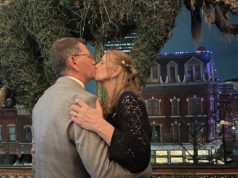When federal officials announced the recipients of a new grant program for transportation projects last month, a lot of consternation raged in this part of North Texas. Although Fort Worth and Dallas had submitted a joint application for modern streetcar lines, the U.S. Department of Transportation handed $23 million to Dallas and not a red cent to Fort Worth.
Tarrant County Judge Glen Whitley soon thereafter speculated that the Obama administration was punishing Fort Worth for being overly Republican. “We’ve got to stop the partisanship,” he told a group of transportation planners in Grapevine last month.
However, a close look at Fort Worth’s application suggests that deception, rather than partisanship, may have been part of the problem. In its half of the application, as it turns out, Fort Worth asked for money to build at least one bridge that has nothing to do with streetcar lines any time in the near future –– but plenty to do with the Trinity River Vision project.
What’s more, the city also apparently asked for money for another bridge that already has full funding. And city officials said that detail was no oversight but an intentional effort to bolster the city’s chances.
“The Trinity River Vision bridges already have received federal funding, but we included them in an application for a streetcar line?” said Fort Worth council member Kathleen Hicks. “How this happened is very confusing, and we need to get some definitive answers as to why. Because in the end, these decisions may have cost us a chance for federal funding for a streetcar line.”
When President Barack Obama announced his stimulus programs last year, one was a $1.5 billion national investment plan called TIGER. No, it’s not a program to help with sex addiction among pro golfers. The acronym stands for “Transportation Investment Generating Economic Recovery,” meaning grants for local governments to improve roads, bridges, and rail and mass transit systems, creating jobs and development along the way.
The U.S. Department of Transportation was overwhelmed with applications: Cities and other entities around the country nominated more than 1,400 projects, with a combined price tag of $60 billion, 40 times the amount available.
Fort Worth and Dallas decided to make a joint application for two streetcar lines (one in each city) that would originate in each city’s downtown area. The reason for the joint request was that the cities are linked by the Trinity Railway Express commuter rail line, and the streetcar connector lines would hook up to the TRE in each downtown. The thinking was that USDOT would like the regional approach, and that the two cities might double their clout and improve their chances in such a competitive arena.
A look at the application shows that Dallas’ half of the proposal was much more specific than what Fort Worth had laid out and also that Dallas would use an innovative approach, one of the criteria for the grants.
The Dallas line would originate downtown at Harwood and Main streets, connect with Union Station, then run across the Trinity River to North Oak Cliff. The application lays out the exact route, street by street. The neighborhood just south of downtown Dallas is an emerging development area, with mixed-use properties, older homes and other buildings, and enough vacant property to double the number of housing units in the streetcar corridor by 2020.
The Fort Worth streetcar proposal was much more vague. Fort Worth planners suggested an “alignment [that] includes a north-south loop that connects the TRE station at the [Intermodal Transportation Center] with the central business district employment center” –– but no specific route. The reason: The city’s appointed Streetcar Study Committee could not agree on exactly which streets the streetcar should run on, and neither of the two favored routes would connect directly with the ITC, where the Trinity Railway Express, Amtrak, and cross-town buses converge.
Fort Worth asked the USDOT for about $31 million of the $54 million needed to build the downtown loop. But the city also asked for about $17 million to help pay for the redesign and rebuilding of three Trinity River bridges: on Henderson Street, North Main Street, and West 7th Street. Henderson has never been seriously considered as a streetcar route, and a streetcar line for North Main couldn’t be done until the rerouting of the river planned as part of the Trinity River Vision plan is complete.
The West 7th bridge, on the other hand, would be key to streetcar plans because it would carry the line that is planned to run between downtown and the Cultural District. However, Fort Worth is funding that project from the city’s 2004 bond money, along with state and federal grants.
Mark Rauscher, transportation manager for the Fort Worth Transportation and Public Works Department, said the $17 million request for bridge funding in the TIGER application covered only the Henderson Street and North Main Street bridges. Yet the application clearly includes the West 7th Street bridge, calling it “critical to these connections are three bridges crossing the Trinity River.”
Rauscher said the West 7th bridge was included in the discussion “because it was in a corridor identified by the streetcar committee as a future corridor. We thought having it included would beef up the grant application.” But even though Fort Worth would not use TIGER funds for the West 7th bridge, it is clearly mentioned as part of the initial segment that includes “bridge crossings needed for the Fort Worth Streetcar and Trinity River Vision.”
“A separate TIGER application for only the TRV-bridges portion was already being assembled when [North Central Texas Council of Governments] suggested that it be combined with the Dallas and Fort Worth Streetcar regional connections effort,” Rauscher said. “I recall a driving factor for this decision being that the projects were so close in terms of geography and the goal to spur continued central city redevelopment.”
Cathy St. Denis, a spokesperson for the USDOT in Washington, said the funding for Dallas and denial of funding for Fort Worth, “was based upon greater ridership and cost benefits for the Dallas plan, and if we split the funding neither would have a chance of being done.”
USDOT is not releasing its reviews of the more than 1,400 project applications until each local government agency can be contacted, St. Denis said. But the inclusion of the bridges in the Fort Worth application “probably was a factor in the denial,” she said. “We were looking to fund specific projects and not to do projects that are not part of the main application, which in this case was a streetcar line.”
Michael Morris, director of transportation for NCTCOG, said the bridges and streetcar were part of the same plan, that is, “to connect near neighborhoods to the central business district. Some of those connections will eventually be streetcar lines, but improved roadways and bridges are also a part of that.”
As for including the West 7th bridge in the application, Morris said a project is “never fully funded until the contractors are fully signed on. There are often cost overruns to be considered. That is also an important connection to the cultural district neighborhood close to downtown.”
But if the purpose of Fort Worth’s streetcar proposal was to connect downtown to neighborhoods nearby, that raises another question. In that case, why did the proposal include only the downtown loop, which doesn’t connect the central business district to anything? Dallas had originally proposed a downtown loop starter line as well, but activists in North Oak Cliff worked relentlessly to convince Dallas staffers and city council to change their thinking.
“We had issues with the downtown loop because it did not connect these neighborhoods close to downtown,” said Jason Roberts, president of the Oak Cliff Transit Authority. “And that was the purpose of this federal grant request. We needed to get people out of their cars, and we thought our community –– with its hospital employment and development potential –– was a good place to connect with the central business district. We were sort of surprised that Fort Worth chose a downtown loop.”
In many ways, the North Oak Cliff neighborhood seems very much like Fort Worth’s hospital district: Both have high employment numbers (mainly in the medical field), a growing housing market close to downtown, and plenty of economic development potential.
Fort Worth’s streetcar study committee had already recommended that a line running down South Main Street and then west on Magnolia Avenue be considered as the first line. So why didn’t Fort Worth ask for funding for a hospital district streetcar connection rather than the downtown loop?
It came down to money and time, said David Gaspers, a senior city planner. The projected cost of the Near Southside route topped $100 million, he said, and the TIGER grant rules specify that any project exceeding $100 million is required “to provide a well-developed analysis of expected benefits and costs … and methodological standards used for the analysis.”
Fort Worth did not approach NCTCOG until mid-July of last year, and the grant proposal had to be done by mid-September, making a detailed analysis impossible to complete. “Unfortunately for the TIGER application, the [Streetcar] Study Committee did not select a definitive route downtown due to several unknown factors, such as underground utilities, projected ridership, and economic development potential,” Gaspers said. “The two-month time frame made tackling the technical and political issues [of choosing a defined route] unrealistic.”
Fort Worth hasn’t given up on finding money for modern streetcar lines. The city will be applying for another grant through the Federal Transportation Administration. HDR Engineering Inc. was recently awarded a $2 million contract by the city to develop route recommendations, construction timetables, and funding options. Mayor Mike Moncrief emphasized in his recent “State of the City” address that mass transit options like streetcars are a high priority for the city.
“Clearly a decision was made to add these Trinity River Vision bridges in at the last minute, and it doesn’t make much sense,” Hicks said. “We had a chance to connect a growing neighborhood on the Near South Side with downtown. And that is what the feds wanted in this program. Instead we gave them a plan that didn’t do that. It is easy to see why we got rejected, but it is also very frustrating.”











